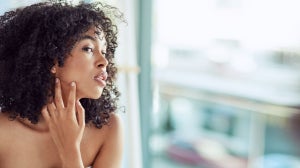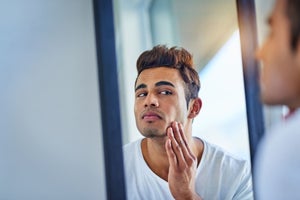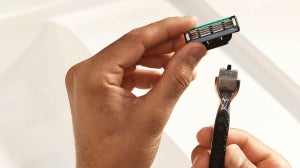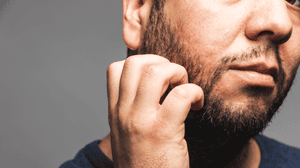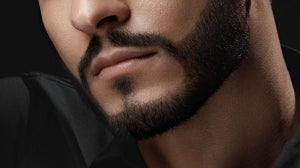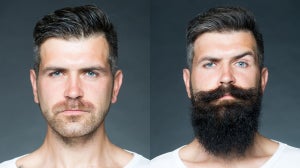
Traditional shaving, also known as wet shaving, is a classic method of using a safety razor, a shaving brush and shaving soap or cream. It is a time-honoured technique that has been practiced for many years and is experiencing a resurgence in popularity today.
What is Traditional Shaving?
A traditional shave refers to a grooming method that achieves close shave and precise results. It is often seen as a more classic approach to shaving compared to using modern cartridge razors or electric shavers.
What are the Benefits of Traditional Shaving Methods?
There are several benefits of traditional shaving compared to modern shaving methods, including:
1. Provides a Closer Shave
Traditional razors, such as safety razors or straight razors, are designed to provide a closer shave by cutting the hair at the skin level. This results in a smoother and longer-lasting shave.
2. May Reduce Irritation
When done correctly, traditional shaving techniques can help reduce skin irritation and razor burn. The use of a sharp blade and proper shaving techniques can minimize the chances of developing ingrown hairs, razor bumps and skin irritation. This can often occur when a blunt blade is used, or the hair is cut against the grain of growth.
3. May be More Cost-Effective
While the initial investment may be higher for purchasing a traditional shaving kit, the long-term cost is significantly lower. Safety razor blades and shaving soaps or creams tend to be more affordable and last longer than disposable cartridge razors and canned shaving foams.
4. It’s a Calming Ritual
Traditional shaving can be seen as a calming, ritualistic experience. The process of lathering up the shaving soap, using a brush to apply it to the face, and taking the time to execute each stroke mindfully can be a meditative and enjoyable part of a grooming routine.
5. Connection to Tradition
Some individuals appreciate traditional shaving as a way to connect with a bygone era and embrace a sense of nostalgia. It can evoke a sense of craftsmanship and attention to detail that is often associated with classic grooming practices.
What’s in a Traditional Shaving Kit?

A traditional shaving kit typically includes the following components:
1. Safety Razor or Straight Razor
The centrepiece of a traditional shaving kit is the razor. It can either be a safety razor, which uses replaceable double-edged blades, or a straight razor, which has a single, folding blade.
We love our safety razor, particularly for those who are prone to catch their skin while shaving. Safety razors are just that. They use a sharp blade to deliver a close, clean shave whilst still keeping your skin and fingers safe, thanks to the protective device held between the edge of the blade and the skin.
2. Shaving Brush
A shaving brush is used to create a rich lather from shaving gel or cream. It is typically made of animal hair or synthetic fibres and helps to exfoliate the skin, lift the hair and evenly distribute the lather.
3. Shaving Cream
Traditional shaving relies on the use of shaving cream or gel, which is used in conjunction with the brush to create lather. Shaving soaps are typically solid, while shaving creams are softer and often come in tubes or tubs. They help lubricate the skin, soften the hair and provide a protective barrier during shaving.
4. Razor Blades
If you're using a safety razor, you'll need razor blades. These are typically double-edged blades that fit into the razor head, like our King C. Gillette Double Edge Safety Razor Blades. They can be made of stainless steel or other materials and should be replaced periodically, depending on usage.
5. Shaving Bowl
Some traditional shaving kits may include a dedicated shaving bowl for lathering the soap or cream. These containers are usually designed with a handle and a textured surface to aid in creating a lather.
6. Aftershave Product
Aftershave is applied to the skin after shaving to soothe and moisturise. It can come in the form of splash-on liquids, balms or gels.
Aftershave products often contain ingredients like witch hazel, aloe vera or moisturizing oils to calm the skin and prevent irritation.
How to Use a Shaving Brush
Want to know how to use a shaving brush? We think it really is one of the joys of traditional shaving as it adds a moment of self-care into your grooming routine. Here’s how it works.
1. Wet the Brush
Start by wetting the bristles of the shaving brush with warm water. You can either hold it under running water or soak it in a bowl of warm water for a few moments. This step helps to soften the bristles and prepare them for lathering.
Remember: Shake off the excess water - you want the brush to be damp but not dripping wet.
2. Load the Brush with the Lather
Take your shaving cream and load the brush with the product. Swirl it in your shaving bowl and continue this motion until you've picked up enough on the brush and whipped up a good lather.
Note: If you don’t own a shaving bowl, simply apply directly to your face with the shaving brush using circular motions. If the lather seems to dry or thick, add water to the mix to achieve the most workable consistency.
Remember: Rinse, Dry and Store: After shaving, rinse the brush thoroughly under warm water to remove any remaining lather and debris.
Gently squeeze the bristles to remove excess water.
Hang it upside down or place it in a stand with the bristles facing downward to dry.
How to use a Shaving Cream
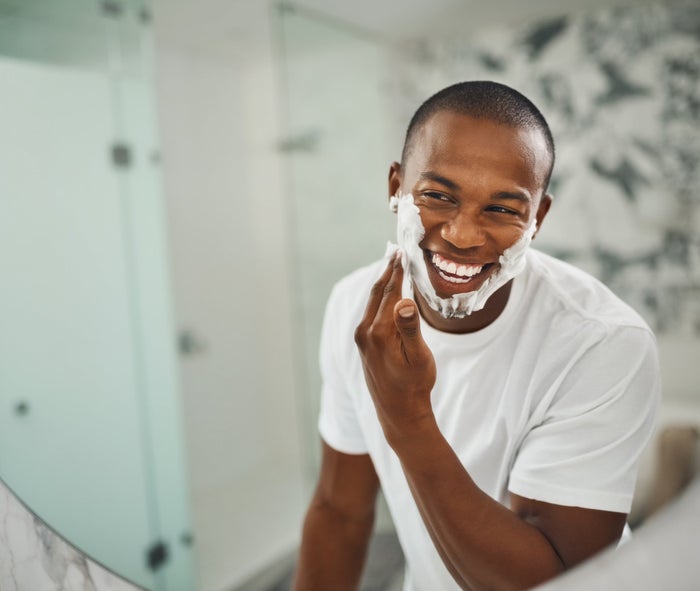
Using shaving cream is a straightforward process and here’s a step-by-step guide on how to use it.
1. Prepare the Cream
Wet your shaving brush with warm water to soften the bristles. Then, run the wet brush over the surface of the traditional shaving cream in a circular or swirling motion, applying a light pressure. Continue this motion until the bristles are well coated.
2. Create a Lather
Move the loaded brush to a shaving bowl or directly to your face and start creating a lather. If using a bowl, swirl the brush vigorously in a circular or back-and-forth motion to whip up the lather. If applying directly to your face, use gentle, circular motions to distribute the lather evenly across your beard area.
Note: Add water if needed. If the lather appears too dry or thick, you can add a few drops of water to the brush and continue working it into the lather. Add water gradually to achieve the desired consistency.
3. Apply Lather and Shave
Once you've created a rich and creamy lather, apply it to your face using the shaving brush. Use gentle, circular motions to work the lather into your beard, ensuring that all areas are adequately covered.
Note: Once you proceed using your preferred razor (safety razor or straight razor), ensure you use proper shaving techniques, taking care to shave in the direction of hair growth to minimize irritation.
How to use a Double-Edge Safety Razor
Now that your shaving cream is applied, it's time to master the art of using a double-edged safety razor. It’s like using a modern cartridge razor, but it requires a slightly different technique. Discover our recommendations how to use this tool:
3. Holding the Razor
Grip the razor firmly at the bottom of the handle, allowing the weight of the razor to do most of the work. Holding the tool at an angle of around 30-45 degrees to your skin will help you achieve the best shave.
4. Shaving Technique
With this step, it is important to follow proper shaving techniques, taking care to shave in the direction of hair growth to minimize irritation. Start with the sides of your face, shaving in short, light strokes in the direction of hair growth. Avoid applying too much pressure on the razor, as it can increase the likelihood of cuts and irritation. Frequently rinse the razor blade under warm water to remove any hair, lather or debris that may have accumulated.
Expert Tip: When shaving sensitive areas, such as your upper lip, stretch the skin by pressing your tongue against the roof of your mouth. For the neck area, shave in the direction of hair growth to minimize the chance of ingrown hairs or irritation. If you want a closer shave, you can do a second pass across the grain of your facial hair.
Remember: Using a traditional safety razor requires practice and some adjustments to your shaving technique. Be patient and pay attention to your razor's angle and pressure. With experience, you'll be able to achieve a close and comfortable shave.
5. Post-Shave
Once you've finished shaving, rinse your face with cold water remove any remaining product. To complete your ritual, gently pat your face dry with a clean towel and apply a soothing aftershave balm or lotion, like our King C. Gillette Moisturiser, to moisturise and soothe the skin.
How to Apply Aftershave
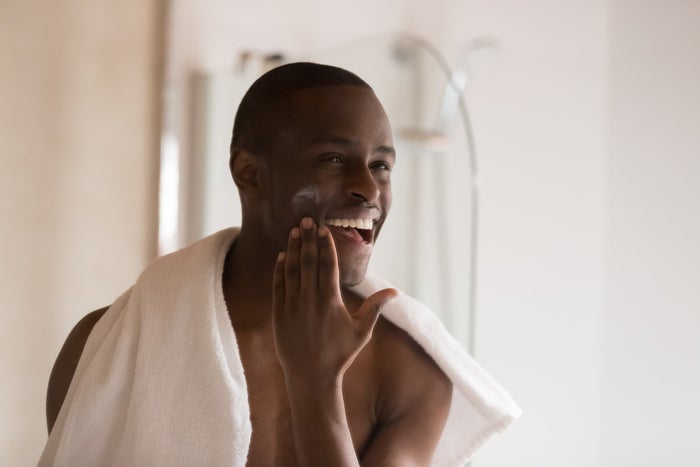
Applying a post-shave fragrance is a simple process that completes your grooming routine, but if applied incorrectly, it may irritate the skin.
Here’s our recommendations for how to apply aftershave:
1. Preparation
Before applying aftershave there are few simple steps to take first. Ensure the face and neck are thoroughly rinsed with cold water to close the pores and soothe the skin. Gently pat your face dry with a clean towel and you’re ready to go.
2. Pour Aftershave into your Palm
Shake the aftershave bottle gently, then pour a small amount (about a penny-sized portion) into the palm of your hand. You can adjust the amount depending on your preference and the coverage you desire.
Remember: Don’t directly apply the product to the face - rub your palms together to distribute the aftershave evenly between your hands.
This will ensure that you don't apply it too heavily in one area.
3. Apply to Your Face
Gently pat or massage the aftershave onto your face, focusing on the areas you have shaved. Avoid rubbing or pressing too hard, as this could cause irritation.
4. Allow Time for Absorption
Give the aftershave a few moments to absorb into your skin. The skin may experience a few moments of redness immediately after application.
5. Follow with Moisturiser
If you have dry or sensitive skin, you may want to follow up with an after applying aftershave. Providing additional hydration will protect your skin from dryness.
Everyone's skin is different, so choose an aftershave that suits your skin type and preferences. Some can contain alcohol, which can have a cooling and antiseptic effect but may be drying for some individuals.
If you find that your skin becomes irritated or dry after using a particular aftershave, consider trying a different product or opting for an alcohol-free version.
It might be time to switch out your everyday shaving methods and opt for a more classic approach. A traditional shave offers an opportunity to elevate your shave to achieve a more refined result, but also allows you to take a moment of self-care in your day, which is often needed.
Want to learn more about the world of shaving, there’s plenty more advice available on our blog.

Related Articles
